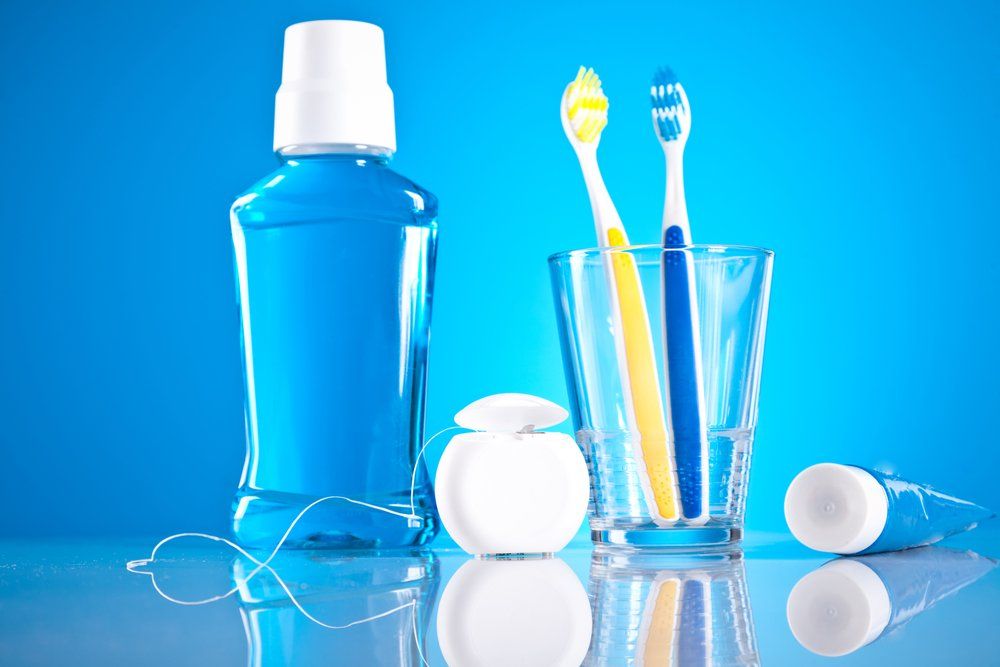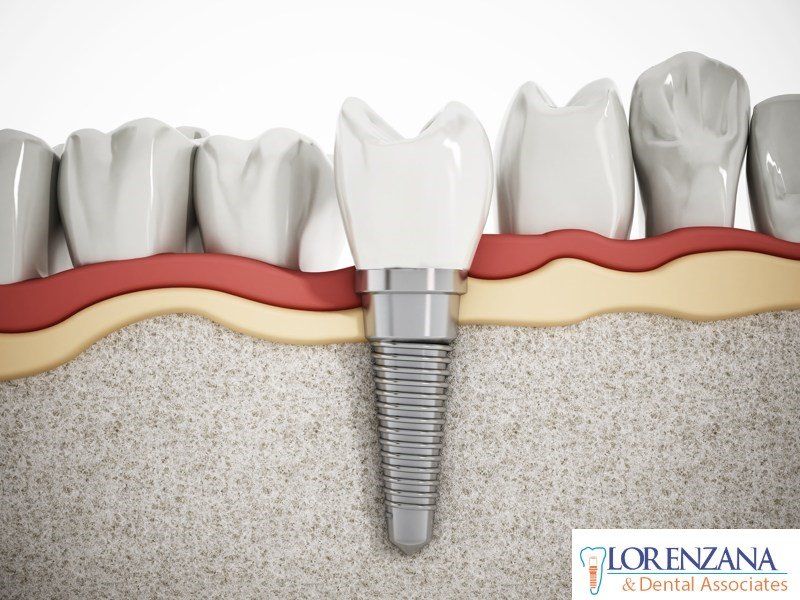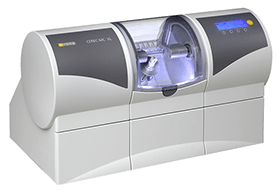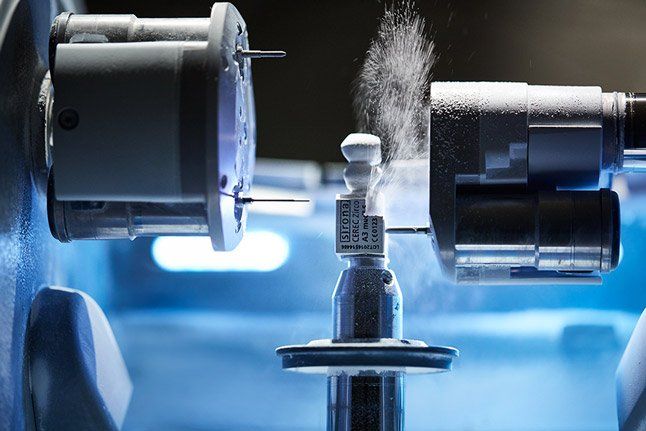Temporomandibular Disorders (TMD)
Dr. Rafael Lorenzana • July 26, 2014
Temporomandibular disorders (TMD) occur as a result of problems with the jaw, jaw joint, and surrounding facial muscles that control chewing and moving the jaw. These disorders are often incorrectly called TMJ, which stands for temporomandibular joint.
What Is the Temporomandibular Joint (TMJ)?
The temporomandibular joint (TMJ) is the hinge joint that connects the lower jaw (mandible) to the temporal bone of the skull, which is immediately in front of the ear on each side of your head. The joints are flexible, allowing the jaw to move smoothly up and down and side to side and enabling you to talk, chew, and yawn. Muscles attached to and surrounding the jaw joint control the position and movement of the jaw.
What Causes TMD?
The cause of TMD is not clear, but dentists believe that symptoms arise from problems with the muscles of the jaw or with the parts of the joint itself.Injury to the jaw, temporomandibular joint, or muscles of the head and neck -- such as from a heavy blow or whiplash -- can cause TMD. Other possible causes include:
- Grinding or clenching the teeth, which puts a lot of pressure on the TMJ
- Dislocation of the soft cushion or disc between the ball and socket
- Presence of osteoarthritis or rheumatoid arthritis in the TMJ
- Stress, which can cause a person to tighten facial and jaw muscles or clench the teeth
What Are the Symptoms of TMD?
People with TMD can experience severe pain and discomfort that can be temporary or last for many years. More women than men experience TMD, and it is seen most commonly in people between the ages of 20 and 40.Common symptoms of TMD include:
- Pain or tenderness in the face, jaw joint area, neck and shoulders, and in or around the ear when you chew, speak, or open your mouth wide
- Limited ability to open the mouth very wide
- Jaws that get "stuck" or "lock" in the open- or closed-mouth position
- Clicking, popping, or grating sounds in the jaw joint when opening or closing the mouth (which may or may not be accompanied by pain) or chewing
- A tired feeling in the face
- Difficulty chewing or a sudden uncomfortable bite -- as if the upper and lower teeth are not fitting together properly
- Swelling on the side of the face
- May occur on one or both sides of the face
- Other common symptoms of TMD include toothaches, headaches, neck aches, dizziness, earaches, hearing problems, upper shoulder pain, and ringing in the ears (tinnitis).
How Is TMD Diagnosed?
Because many other conditions can cause similar symptoms to TMD--– including a toothache, sinus problems, arthritis, or gum disease -- your dentist will conduct a careful patient history and physical exam to determine the cause of your symptoms. Source: WebMD
Trastornos temporomandibulares (TTM)
Los
trastornos temporomandibulares (TTM) ocurren como resultado de
problemas con la mandíbula, la articulación de la mandíbula y los
músculos faciales circundantes que controlan la masticación y el
movimiento de la mandíbula. Estos trastornos a menudo se llaman incorrectamente TMJ, que significa articulación temporomandibular.
¿Qué es la articulación temporomandibular (TMJ)?
¿Qué es la articulación temporomandibular (TMJ)?
La articulación
temporomandibular (TMJ) es la articulación de bisagra que conecta la
mandíbula inferior con el hueso temporal del cráneo, que está
inmediatamente en frente de la oreja a cada lado de la cabeza. Las
articulaciones son flexibles, lo que permite que la mandíbula se mueva
suavemente hacia arriba y hacia abajo y de lado a lado y le permite
hablar, masticar y bostezar. Los músculos unidos a la articulación de la mandíbula y alrededor de ella controlan la posición y el movimiento de la mandíbula.
¿Qué causa TMD?
La causa del TMD no está clara, pero los dentistas creen que los síntomas surgen de problemas con los músculos de la mandíbula o con las partes de la articulación misma.
Las lesiones en la mandíbula, la articulación temporomandibular o los músculos de la cabeza y el cuello, como por un fuerte golpe o un latigazo cervical, pueden causar TMD. Otras posibles causas incluyen:
¿Cuáles son los síntomas de TMD?
Las personas con TMD pueden experimentar dolor severo e incomodidad que puede ser temporal o durar muchos años. Más mujeres que hombres experimentan TTM, y se observa con mayor frecuencia en personas de entre 20 y 40 años.
Los síntomas comunes de TMD incluyen:
¿Cómo se diagnostica el TMD?
Debido a que muchas otras afecciones pueden causar síntomas similares a TMD, incluyendo un dolor de muelas, problemas sinusales, artritis o enfermedad de las encías, su dentista llevará a cabo un cuidadoso historial del paciente y un examen físico para determinar la causa de sus síntomas.
Fuente: WebMD
En Lorenzana & Dental Associates estamos dedicados a proporcionar a nuestros pacientes salud y buena funcionalidad, de larga duración, por lo tanto, una de las herramientas que utilizamos es el análisis oclusal completo. El uso de equipos especializados recoge datos sobre el contacto dental, extremadamente útil en el curso posterior del tratamiento dental.
¿Qué causa TMD?
La causa del TMD no está clara, pero los dentistas creen que los síntomas surgen de problemas con los músculos de la mandíbula o con las partes de la articulación misma.
Las lesiones en la mandíbula, la articulación temporomandibular o los músculos de la cabeza y el cuello, como por un fuerte golpe o un latigazo cervical, pueden causar TMD. Otras posibles causas incluyen:
- Rechinar o apretar los dientes, lo que ejerce mucha presión sobre la ATM Dislocación del cojín o disco blando entre la bola y el zócalo
- Presencia de osteoartritis o artritis reumatoide en la articulación temporomandibular
- Estrés, que puede hacer que una persona apriete los músculos faciales y mandibulares o apriete los dientes
¿Cuáles son los síntomas de TMD?
Las personas con TMD pueden experimentar dolor severo e incomodidad que puede ser temporal o durar muchos años. Más mujeres que hombres experimentan TTM, y se observa con mayor frecuencia en personas de entre 20 y 40 años.
Los síntomas comunes de TMD incluyen:
- Dolor o sensibilidad en la cara, área de la articulación de la mandíbula, cuello y hombros, y dentro o alrededor del oído cuando mastica, habla o abre la boca de par en par. Capacidad limitada para abrir la boca muy ampliamente.
- Mandíbulas que se "atascan" o "bloquean" en la posición de boca abierta o cerrada. Haga clic, explote o ralle sonidos en la articulación de la mandíbula al abrir o cerrar la boca (que puede o no estar acompañada de dolor) o masticar.
- Una sensación de cansancio en la cara Dificultad para masticar o una mordida repentina e incómoda, como si los dientes superiores e inferiores no encajaran adecuadamente. Tejidos en el costado de la cara
- Puede aparecer en uno o ambos lados de la cara. Otros síntomas comunes de TMD incluyen dolor de muelas, dolores de cabeza, dolores de cuello, mareos, dolores de oído, problemas de audición, dolor en el hombro superior y zumbido en los oídos (tinnitis).
¿Cómo se diagnostica el TMD?
Debido a que muchas otras afecciones pueden causar síntomas similares a TMD, incluyendo un dolor de muelas, problemas sinusales, artritis o enfermedad de las encías, su dentista llevará a cabo un cuidadoso historial del paciente y un examen físico para determinar la causa de sus síntomas.
Fuente: WebMD
En Lorenzana & Dental Associates estamos dedicados a proporcionar a nuestros pacientes salud y buena funcionalidad, de larga duración, por lo tanto, una de las herramientas que utilizamos es el análisis oclusal completo. El uso de equipos especializados recoge datos sobre el contacto dental, extremadamente útil en el curso posterior del tratamiento dental.
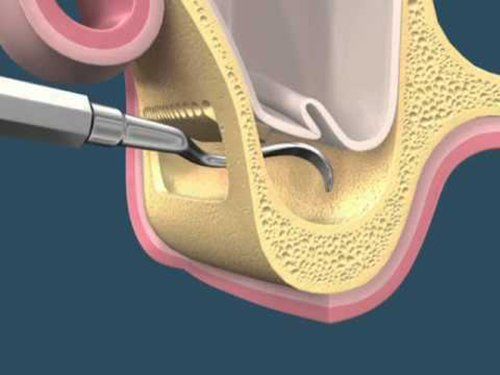
¿Qué Es? El levantamiento de seno maxilar es una cirugía que agrega hueso a tu maxilar superior en el área de tus molares y premolares. El hueso es agregado entre tu maxilar y tus senos maxilares, los cuales se encuentran a cada lado de tu nariz. A modo de hacer espacio para el hueso, la membrana sinusal necesita ser levantada. ¿Para Qué Se Usa? Un levantamiento de seno se realiza cuando no hay suficiente altura en el hueso del maxilar, o cuando los senos están demasiado próximos al maxilar, y los implantes dentales no se pueden colocar por tal motivo. Hay varias posibles razones para que esto suceda: · Muchas personas que han perdido los dientes de su maxilar superior — particularmente los dientes posteriores o molares — no tienen suficiente hueso para que los implantes dentales sean colocados. Una vez se pierde un diente, el hueso en esa área comienza a ser reabsorbido. Si los dientes han estado ausentes por un largo tiempo, con frecuencia no hay suficiente hueso restante para colocar implantes. · Se pudo haber perdido hueso debido a alguna enfermedad periodontal (de las encías). · El seno maxilar puede estar demasiado próximo al maxilar superior. La forma y tamaño del seno varía de persona a persona. El seno también puede agrandarse a medida envejeces. ¿Cómo Se Hace? Tu cirujano hará una incisión y levantará la encía donde tus dientes posteriores solían estar, exponiendo el hueso. Se hace un pequeño agujero ovalado en el hueso. La membrana que reviste el seno en el lado opuesto al agujero separa tu seno de tu maxilar. Esta membrana se empuja suavemente hacia arriba y lejos de tu maxilar. Material de injerto óseo es insertado en el espacio donde el seno solía estar. Una vez el hueso está en su lugar, el tejido es suturado. Lo Que Sigue Después del procedimiento, podrías tener algo de inflamación en el área y podrías sangrar por tu boca o nariz. No te suenes la nariz o estornudes con fuerza. Hacer eso podría causar que el material de injerto óseo se mueva y que los puntos de sutura se aflojen. Puede ser que tu dentista te prescriba medicina para prevenir el congestionamiento y la inflamación. También necesitarás medicina para el dolor, un antibiótico y enjuague bucal antimicrobiano para prevenir una infección. La mayoría de los pacientes solamente experimentarán un poco de incomodidad luego de un procedimiento de levantamiento de seno. Verás al especialista luego de algunos días. Él/ella evaluará el sitio de la cirugía y retirará los puntos de sutura si fuese necesario. Podrías tener que visitar al especialista un par de veces más para que se asegure de que el área está sanando apropiadamente. Tus implantes se colocarán entre cuatro y nueve meses después del levantamiento de seno, dependiendo de la cantidad de hueso requerida. Esto permite que haya tiempo para que el material de injerto óseo se una a tu hueso.
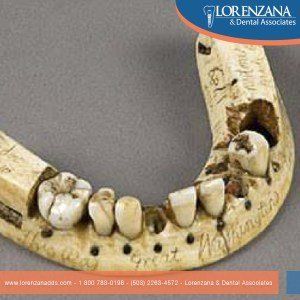
Hoy en día la prótesis dental nos permite reemplazar los dientes perdidos con un aspecto muy estético y natural, devolviendo a la boca la función perdida; pero eso no fue siempre así. Las primeras prótesis dentales de las que tenemos constancia provienen de los etruscos del siglo VIII a. C. y se conserva en el Museo de la Facultad de Odontología de París. Los etruscos utilizaron dientes de animales para reemplazar las piezas faltantes ensambladas sobre bandas de oro, lo cual muestra habilidades muy altas por parte de ellos. Creemos que los fenicios ya usaron oro blando y alambre de oro para la construcción de prótesis dentales. También utilizaron soldaduras y modelos de impresiones. Hacia 754 aC , los etruscos, hábiles artesanos de la época, producían pónticos muy complejos. Empleaban bandas de oro soldadas cada una por pónticos hechos con diferentes piezas dentales de humanos o animales.
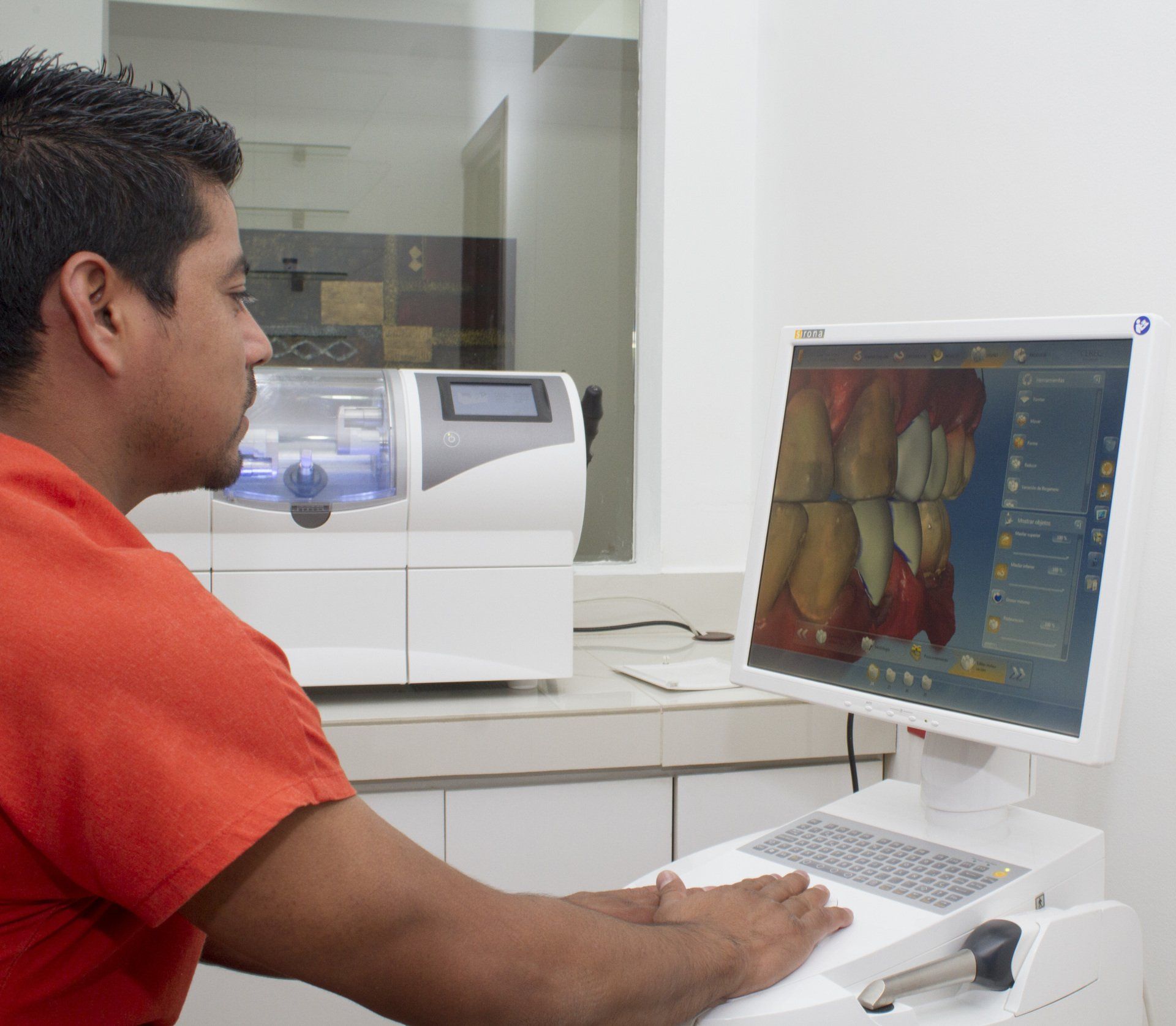
At Lorenzana & Dental Associates, we love our CEREC system - and our patients love it, too! Thanks to CEREC, we can give people the convenience of getting their teeth fixed (e.g. crowns, veneers) in as little as a single visit to our clinic. That is just impressive, right? But how did such an incredible technology as CEREC come into existence? Well, we will talk a little about that in this blog, which is the first in a series of blogs about this system. Let's get to it!
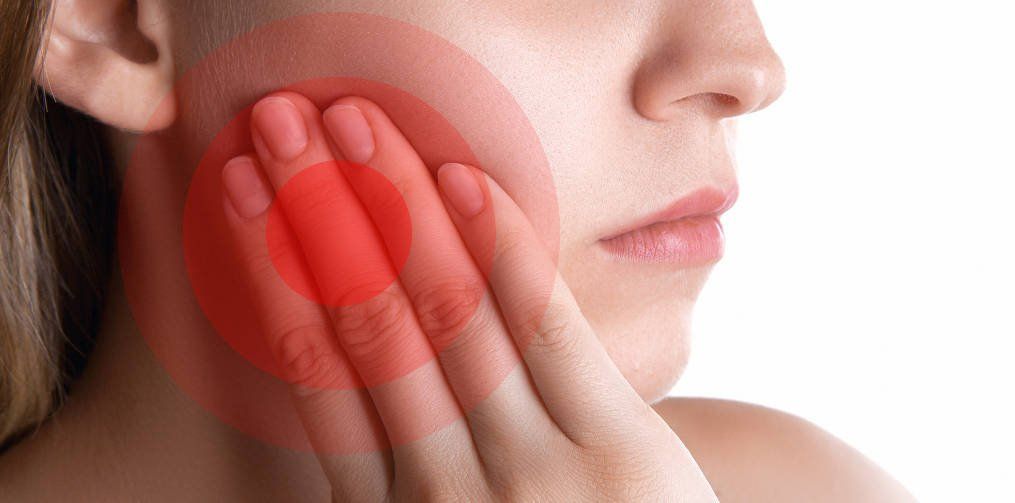
Temporomandibular joint disorders are conditions that cause discomfort and inhibit the proper functioning of the jaw joint and muscles that control jaw movement. Causes In most cases, the cause of TMJ disorders is not evident. However, here is a list of potential causes: External trauma, such as a hard hit to the head or jaw. Tooth grinding or jaw clenching. Poor alignment between top and bottom teeth. Excessive chewing (e.g. gum or fingernails). Overextending the TMJ while eating large things. Degenerative diseases. Symptoms There are various symptoms that could be related to TMJ disorders. Examples of these are the following: Pain in facial, jaw, neck or back muscles. Swelling. Muscle stiffness or limited movement of the jaw. Clicking, popping or grating sounds accompanied by pain when moving the jaw. Teeth not fitting comfortably together. Jaw not opening uniformly or locking. Headache or earache. Difficulty swallowing. Diagnosis There is not always a straightforward way of diagnosing TMJ disorders. Exact causes and symptoms are not clear, and that means the discomfort someone is experimenting could be due to different health issues. Your doctor will take your symptoms and medical history into consideration and then will examine areas of discomfort, including the head, neck, face, and jaw. The doctor might also use x-rays in the analysis of your case. Treatment Reversible Treatments Conservative treatments do not invade the tissues of the face, jaw, or joint, or involve surgery. Reversible treatments do not cause permanent changes in the structure or position of the jaw or teeth. It is advisable that you try these first, before considering more expensive and permanent ones. Muscle and ligament tightness can be helped with jaw stretching and relaxing exercises as advised by your doctor. If the jaw becomes locked, it may be necessary to manipulate the joint back into place under a general anaesthetic. The most common TMJ issues are temporary and do not get worse. Short-term use of pain relievers, such as ibuprofen, may be sufficient. A stabilization splint or a bite guard may provide relief. Stabilization splints should only be used for a short time and should not cause permanent changes in bite. Permanent Treatments There is often debate around the use of permanent methods to treat TMJ disorders. There are no long term studies that show the efficacy of these methods, plus they are extensive and often more expensive than reversible treatments. The bite may be adjusted by polishing teeth, using reconstructive dentistry, or fitting braces. A repositioning splint may be fitted, which over time will permanently change the position of the jaw, ligaments and muscles. There may be an effect on teeth alignment, so more dental work may be needed to adjust the teeth. There is even the option to replace the jaw joint with artificial implants, but it should be considered a last resort. Self-Care In many cases, self-care measures can help alleviate the symptoms of TMJ disorders: Eating soft foods. Applying cold or warm compresses. Avoiding excessive jaw movements (shouting, gum-chewing, and wide yawning, for instance). Practicing gentle jaw stretching and relaxing exercises. Resting the jaw as much as possible. SOURCES: National Institute of Dental and Craniofacial Research Health Navigator



